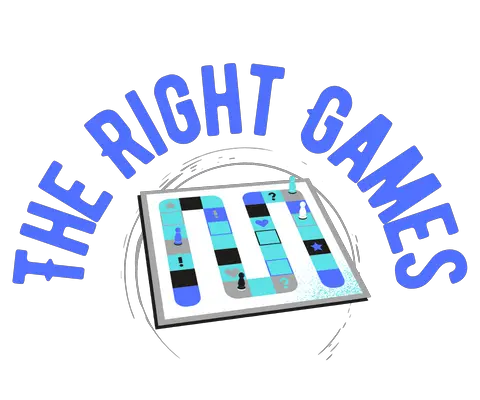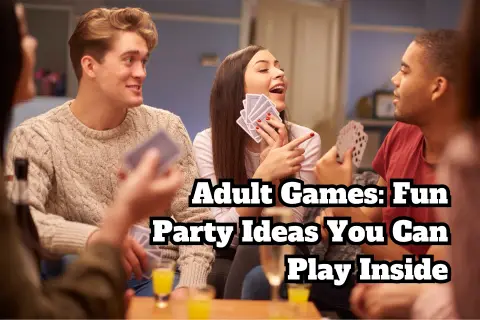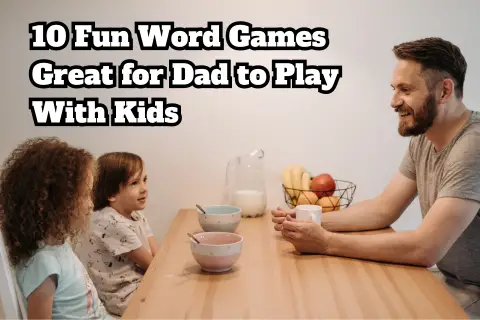Bored kids can come up with all sorts of trouble to entertain themselves. All of their shenanigans typically have one thing in common: noise. Coming up with activities or games to entertain them is hard, but when you are in a public place or setting that requires them to be quiet, this seems like an impossible task.
Maybe you are sitting in a waiting room with a couple of kids right now and you are desperate for ideas. That is why we are here. Let’s run through some quiet games to have fun with inside voices!
Game Ideas When You Need to Entertain Kids Quietly
Here are some quiet games for kids that you can play at a restaurant or public place to keep them entertained:
Counting Challenge
Challenge kids to count specific objects around them. For example, “How many red things can you spot?” or “How many circles can you find?” This game is quiet and helps improve focus. For an additional challenge, ask kids to count objects based on shape or texture, like “How many things that are smooth can you find?” or “How many square objects are there?” This makes them more aware of their surroundings.
Alphabet Game
Ask kids to spot letters in their surroundings, starting with A and working through to Z. They can look at signs, menus, or anything around. You could also add a twist by limiting it to a certain category, like “find letters only on food-related items” or “find letters in people’s clothing.”
Silent Storytelling
Take turns telling a story, with each person contributing just one sentence. The trick is to speak quietly or even write the sentences down if necessary. Instead of just taking turns, the person who contributed can pass the story by pointing at the next person, silently selecting who should continue.
Match the Number
Give kids a number (say, 10) and challenge them to think of objects in the room that could add up to that number (e.g., 4 chairs and 6 windows, etc.). This simple math game can be surprisingly engaging. You could also ask the kids to match objects based on weight or volume, such as “Can you find objects that look like they might weigh the same as this spoon?”
Word Associations
One person says a word, and the next person has to quickly say a word associated with it. This continues back and forth, building connections and quick thinking. Introduce categories like emotions or places, so when someone says a word, it must be related to the chosen category (e.g., “Happy” → “Smile,” “Paris” → “Eiffel Tower”).
Number Sequence Memory
Say a sequence of numbers, starting with just two or three digits, and have the kids repeat it back. Keep adding a number to the sequence with each round to test their memory. To make it more challenging, introduce two sequences of numbers that need to be remembered and repeated back in reverse order.
Who Am I?
One person thinks of a famous character, animal, or person, and others ask yes/no questions to guess who it is. To add variety, you can limit the guesses to specific categories like animals, superheroes, or historical figures.
Drawing Doodles
Each person starts by drawing a simple doodle on a napkin or piece of paper. Pass it to the next person, who adds to the drawing, and continue until you’ve created something fun together. After completing a doodle, challenge the kids to give it a title or create a story about the doodle.
Connect the Dots
Quickly create a grid of dots on a napkin or piece of paper. Take turns drawing lines between two adjacent dots, trying to complete squares. The player who completes the most squares wins. Create themed versions of connect-the-dots (e.g., creating animals, cars, or geometric shapes) to inspire more creativity.
Silent Word Puzzle
Pick a word, and the kids must silently rearrange the letters on paper to create new words. For example, from “DOG” they can make “GOD” or “GO.” Add a time challenge where players have a limited time to create as many words as possible from the scrambled letters.
Pass the Drawing
One person starts by drawing part of a picture (e.g., a head), folds the paper over, and passes it to the next person to draw the next part (e.g., the body) without seeing what came before. The result is often funny and surprising!
You could also try creating something seasonal (e.g., a holiday-themed figure or animal), making it more thematic and fun.
Alphabet Categories
Pick a category (e.g., animals, food), and take turns naming something in that category in alphabetical order (e.g., Alligator, Bear, Cat, etc.). The first person who can’t think of something for a letter is out. Use your specific environment like “things you see in a restaurant,” or “things in nature,” to guide the choices.
Paper Telephone
Similar to the drawing game, each player writes a sentence, folds the paper, and passes it. The next person draws a picture based on the sentence, folds it, and passes it again. This continues until the final reveal. For younger children, try using simple, well-known characters or items for easier story progression and understanding.
Color Hunt
Have each child pick a color and try to spot as many objects in that color as possible around the restaurant or public area. Add a memory challenge by having the kids recall and list all the objects they found in their color after the hunt is over. This game encourages observational skills and focus, turning a regular environment into an opportunity for discovery.
Spot the Difference
This one works well at a restaurant. Ask your child to close their eyes while you move something on the table (like swapping a fork and spoon). When they open their eyes, they have to figure out what’s different. After finding the initial difference, try removing or adding multiple items and seeing if the kids can detect all the changes.
Synonym Game
Pick a word, and everyone takes turns saying a synonym (another word that means the same thing). Keep going until no one can think of any more. For older kids, you can make it more challenging by focusing on advanced vocabulary or specific topics like “space” or “emotions.”
Hidden Object
Place a small object (e.g., a coin or a toy) under one of three upside-down cups or napkins. Shuffle them around and ask the kids to guess where the object is. Once the kids get the hang of it, have them be the ones to hide the object and shuffle the cups. They can challenge the adults.
Silent Spy
Challenge the kids to observe their surroundings for one minute in complete silence. Afterward, ask them to name as many things as they remember seeing. Once they’ve remembered what they saw, challenge them to describe the objects they noticed in the most detail (e.g., “the man in the red shirt had a blue watch”).
Menu Word Hunt
Give the kids a menu and ask them to find words that start with a specific letter, are a certain length, or relate to a specific category (e.g., all the desserts). Challenge the kids to find the longest word, or find words that they’ve never heard before and try to figure out their meanings.
Silent Hand Signals
Create a series of secret hand signals or gestures to communicate different ideas (e.g., “I’m hungry,” “I need water”). See how well you can communicate without talking. Take turns inventing new hand signals or gestures and see if others can guess what they mean.
Spot the Patterns
Challenge the kids to find patterns in their surroundings, such as repeating shapes, colors, or numbers (e.g., tiles on the floor, the arrangement of chairs, or the pattern on the wall).
Quiet Simon Says
Play a quieter version of Simon Says by using hand gestures or silent movements instead of words. You can give instructions like “raise your hand,” “blink twice,” or “tap your nose,” and see who follows along. To make it even quieter, use only hand motions or subtle facial expressions, increasing the challenge and focus.
Wrapping Up
In conclusion, keeping kids quietly entertained in public places doesn’t have to be a challenge. With a variety of engaging games and activities, you can stimulate their minds while maintaining a peaceful atmosphere. Whether it’s counting objects, playing word puzzles, or participating in creative storytelling, these simple and quiet games not only keep children occupied but also enhance their cognitive skills and creativity. The next time you’re at a restaurant or in a public space, try these fun and quiet games to ensure a smooth, enjoyable experience for both you and the kids.



